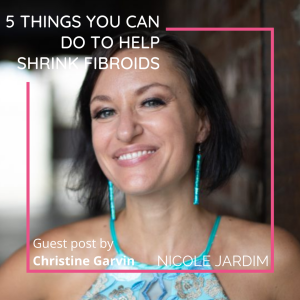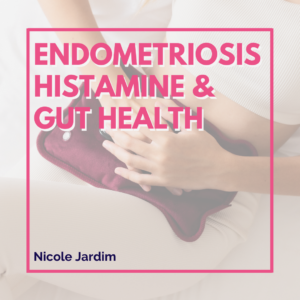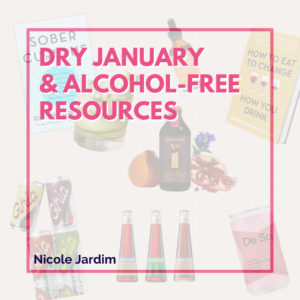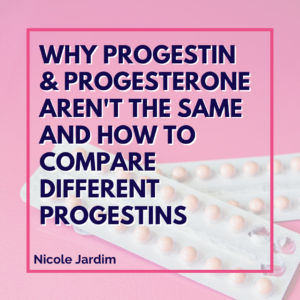Written by my Spring 2019 apprenticeship participant, Christine Garvin, this post discusses uterine fibroids and how to treat them.
Did you know that a whopping 80% of women will have a fibroid by the time they are 50?
Now, if you are anything like I was a year and a half ago, you may not have even heard of fibroids, much less know this mind-blowing statistic.
First, the good news: Fibroids are almost always non-cancerous (less than 1 in 1,000 are). They are located in the uterus and are made up of smooth muscle cells and fibrous tissue.
Many women have them without even realizing it. They can be small and stay that way until menopause, when *most* fibroids shrink completely. For other women, though, they can cause symptoms such as frequent urination, excessive bleeding during and in-between periods, anemia, painful sex, and discomfort in the rectum. Fibroids occur when estrogen becomes dominant, with progesterone levels lowered.
The reason I learned about fibroids a year and a half ago is because I developed one that was 6cm (the size of an orange) when it was discovered. I went the surgical route, and faced a very traumatic situation because of it. Now, my mission is to educate women on how to approach shrinking their fibroids naturally so they don’t need to face the same decision I did.
Here are five approaches to helping diminish your fibroids (or keep them at bay!):
Address Your Stress Levels
Although I know it’s not the most flashy of ways to help reduce fibroids, I bring up stress first because it is undoubtedly the most important thing you must do.
Stress affects every one of your hormones, your thyroid, and your adrenals. Because they work in delicate concert with one another, added stress sends these energy centers into overdrive, eventually lowering their function. Hormone levels get out of whack, often with estrogen becoming the dominant hormone.
Most of us need much more relaxation in our daily lives. Figuring out a daily calming practice that works for you, whether that is meditation or visualization, qi gong or tai chi, yoga or breath work, will support your body to continue its normal detoxifying and balancing functions.
Liver Support
You may not know that one of the liver’s biggest jobs is to detox estrogen and help move it out of your body. Unfortunately, estrogen detox comes after things like alcohol, caffeine, cigarettes and drugs, which means extra estrogen can end up being recycled through your body.
Besides eliminating alcohol and other toxins, what can you do to help your liver? Eat plenty of liver supporting foods like beets, Brussels sprouts, cauliflower, organic beef liver, green leafy vegetables, chicken, garlic, and rosemary.
Supportive nutrients for your liver include methionine, glutamine, taurine, and glycine, along with sulfur, molybdenum, and vitamin B12. My favorite liver-supporting supplement? Glutathione, otherwise known as the “master” antioxidant.
Eliminate Xenoestrogens
What are xenoestrogens? They are chemical endocrine disruptors that come into our body via food, drinks, drugs, and pollutants, along with what we put on our skin. They are found in things we use everyday: plastic water bottles, makeup, hair care products, receipts, carpet, non-organic foods, over-the-counter pain relievers, and a multitude of other things.
Yes, they are everywhere!
Unfortunately, they have the ability to mimic estrogen in our body, binding to our estrogen receptors. Removing as many xenoestrogens as possible will help in fighting fibroids. But how, exactly? Stay away from foods that have been sprayed with pesticides. Drink and eat out of glass containers instead of plastic (don’t forget what you store your food in!). And switch out beauty products that contain parabens.
Diet
There’s no consensus on what type of dietary approach will truly help reduce fibroids.
The research has told us a few things, including a 2011 study published in the American Journal of Clinical Nutrition that found a reduced risk of fibroids for women who had greater intake of fruits, vegetables, and vitamin A from animal sources. A higher intake of cruciferous vegetables acts as a “protective factor” against fibroids, according to a 2016 Chinese study.
We know that alcohol is not good for fibroids, according to the 2004 Black Women’s Health Study, where beer drinkers were found to have a 50% increased risk for developing fibroids. It’s a safe bet to remove factory-farmed meat and dairy, as they often have added hormones and antibiotics. Stick with organic fruits and vegetables as much as possible.
Ultimately, an anti-inflammatory diet based on eliminating sugar and refined foods, along with your particular food sensitivities, where you digest your food easily, support your liver, and feed your estrobolome is your best bet.
Love Your Estrobolome
If you noticed this term in the last section and thought, “What in the world is that?” I’m here to tell you it should be your new favorite word (it’s so much fun to say!).
Your estrobolome is essentially a subset of your microbiome, whose focus it is to break down and process estrogen.
Great ways to work with your estrobolome include:
- Eating plenty of fiber, particularly foods that feed good bacteria such as Jerusalem artichoke, apples, and flaxseeds.
- Increasing your consumption of vitamin A, vitamin D3, and Omega-3s.
- Using a quality probiotic daily. Though the best form of probiotics is still up for debate, a small study showed significant reductions in general ill feelings and indigestion with a soil-based (SBO) probiotic.
- Birth control pills, unfortunately, have been shown to negatively impact the gut microbiome.
There are many other supportive supplements and lifestyle options to help reduce fibroid growth.
I highly recommend working with a skilled practitioner to test your hormones so that you aren’t guessing which supplements or herbs you should be taking.
Remember, there is a lot you can do to begin to shrink your fibroids if you have them, or keep them from returning. You have an amazing capacity for balancing your hormones, which is going to help you in ways far above and beyond your uterus!
*************
About Christine
 Christine Garvin, MA, NE, is a Whole Health Coach based in Asheville, NC. She weaves together her personal health journey—including a fibroid surgery that went terribly wrong—with her training in holistic health, nutrition, and hormones to help women heal their gut and achieve hormonal balance. She sees clients all over the world via Zoom, and she offers self-guided healing programs at her website. Find out more at christinegarvin.com.
Christine Garvin, MA, NE, is a Whole Health Coach based in Asheville, NC. She weaves together her personal health journey—including a fibroid surgery that went terribly wrong—with her training in holistic health, nutrition, and hormones to help women heal their gut and achieve hormonal balance. She sees clients all over the world via Zoom, and she offers self-guided healing programs at her website. Find out more at christinegarvin.com.




1 thought on “5 Things You Can Do to Help Shrink Fibroids”
Hello!
I had an ultrasound done 2 months ago and they found a email fibroid. I knew there was something wrong with me because before that ultrasound I was having intermenstrual bleedings and spotting. My research started!
I have been reading Jolene Brighten, Melissa Ramos and NIcole Jardim ….and I have learned soo much …I started making changes right away in diet, level of activity, herbs, supplements …you name it! I have noticed changes like my spotting and bleeding between periods stopped…my overall health is feeling better.
I am just curious about one thing and it is how can I tell that my fibroid is actually shrinking? My period is still coming strong and I still see pretty big blood clots ….
Can I see this in a thermography?